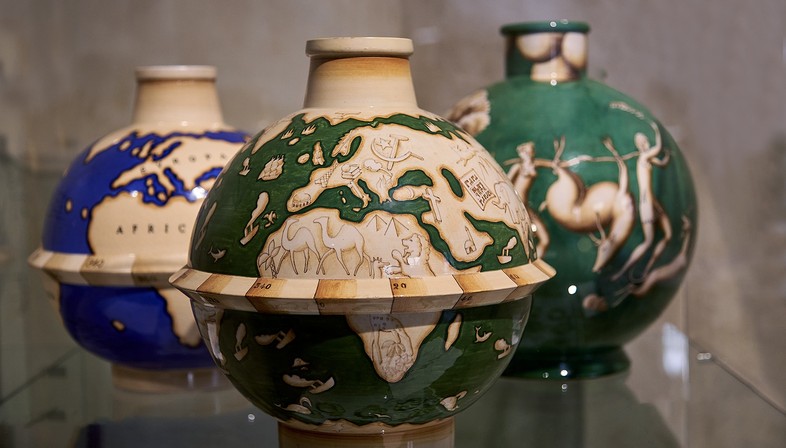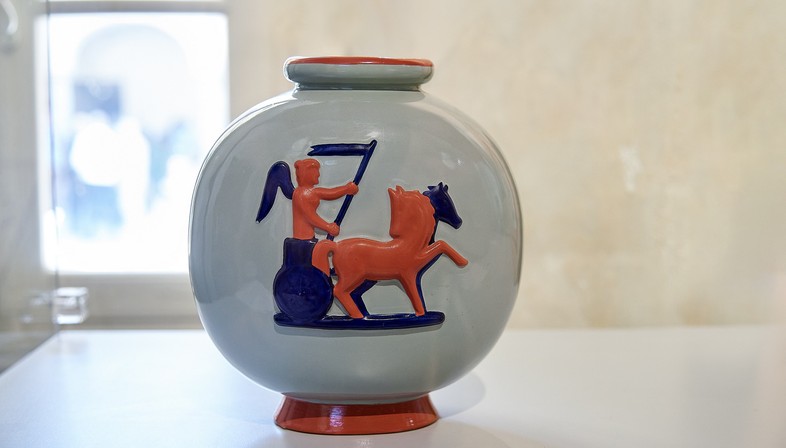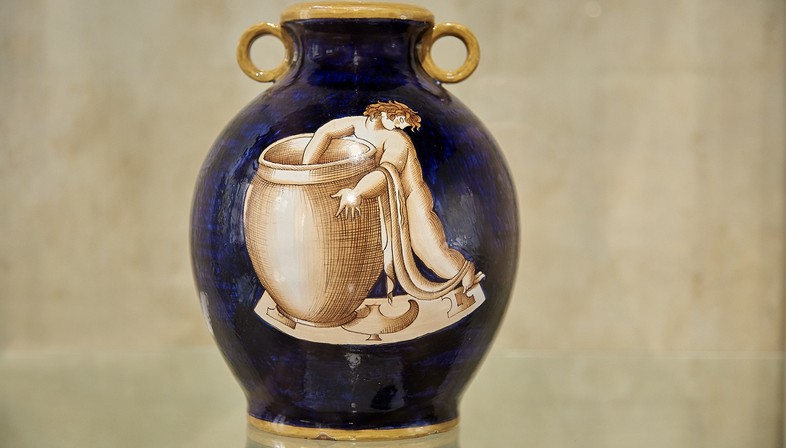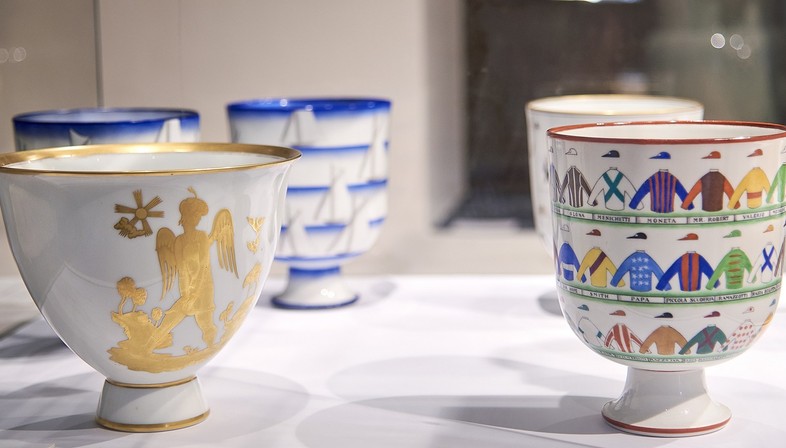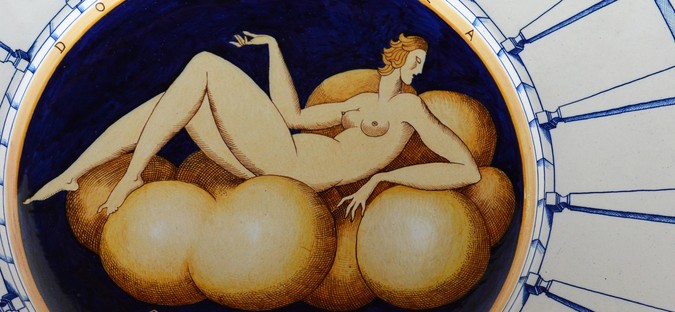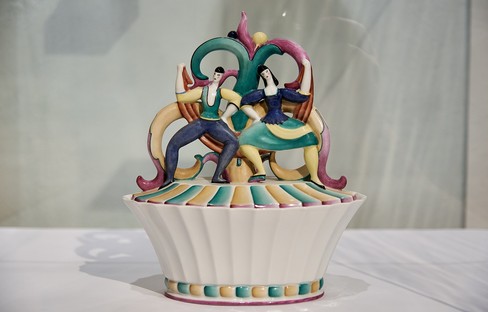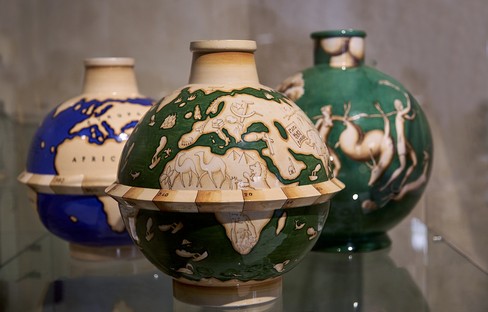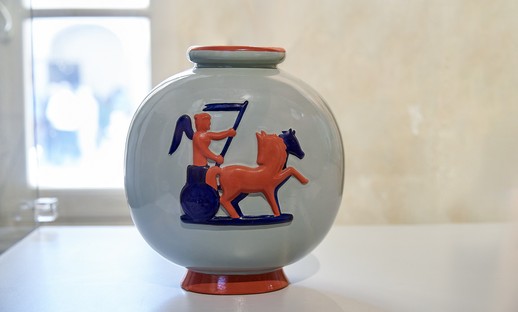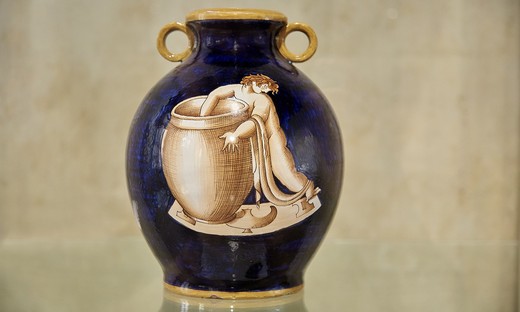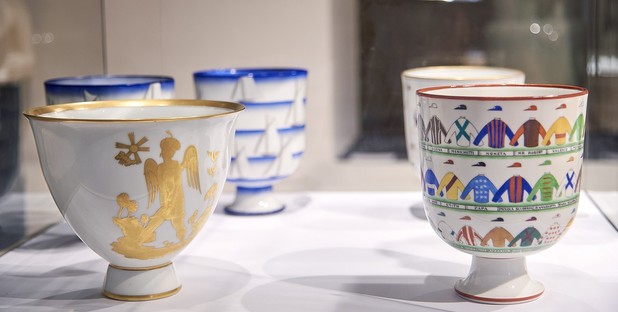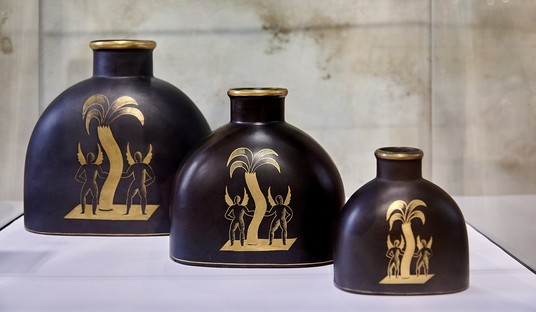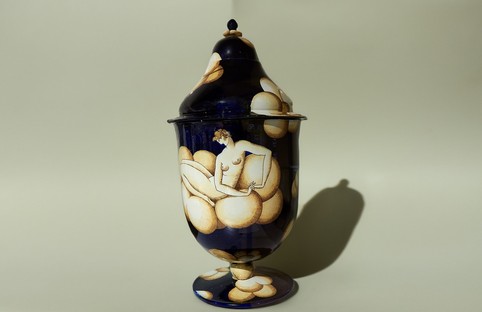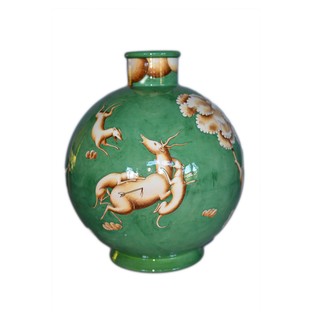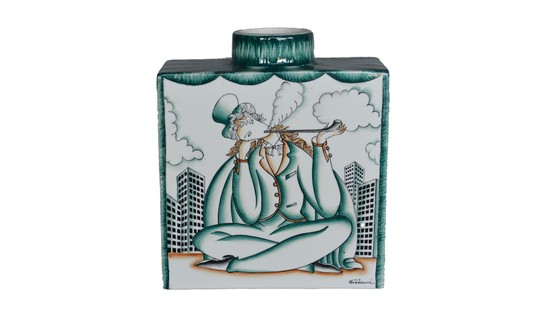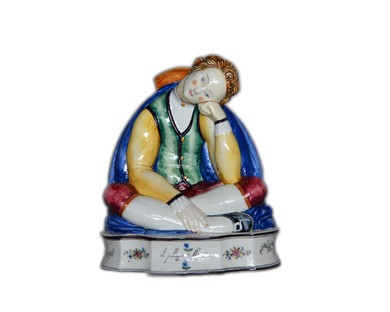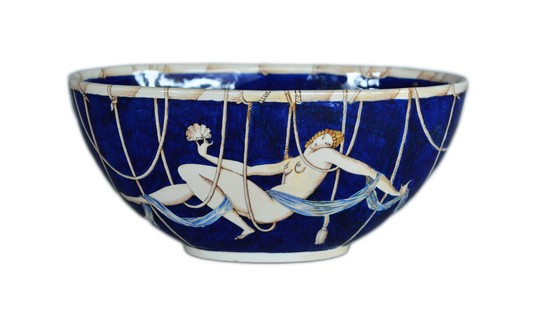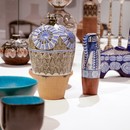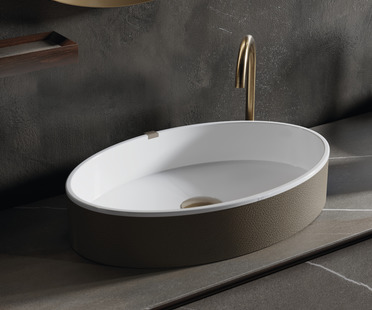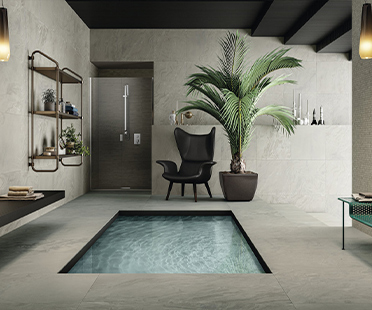20-09-2023
Gio Ponti and the 1920s: the ‘ceramic’ debut of a genius
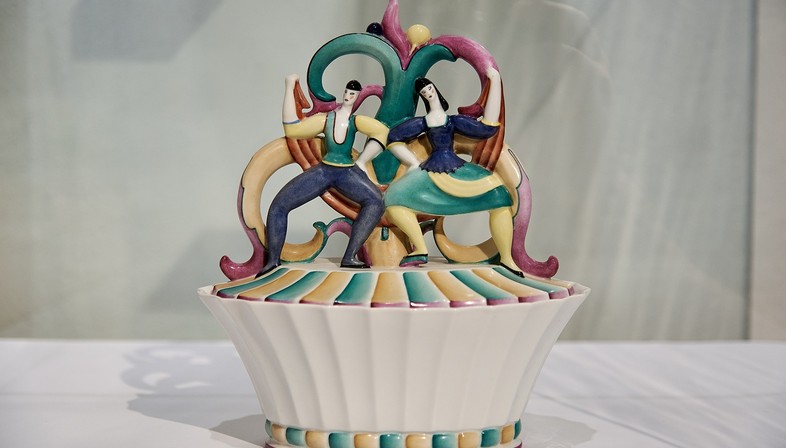
One of Gio Ponti’s inimitable talents was knowing how to capture the zeitgeist and, often, even anticipate it. A remarkable ability that he demonstrated right from the start of his professional career, quickly garnering him an enviable reputation both in Italy and internationally. And there is no better evidence of this than the small yet delightful exhibition “100% Un centenario e cento pezzi: Richard-Ginori e Gio Ponti in una collezione lavenese” (100%, One Hundred Years and One Hundred Pieces: Richard-Ginori and Gio Ponti in a Lavenese Collection), which is currently on at MIDeC - the International Museum of Ceramic Design in Laveno-Mombello, housed in the 16th-century Palazzo Perabò on the shores of Lake Maggiore in Varese. The number one hundred is multiplied by the two elements the exhibition revolves around: the centenary of the first Biennial Exhibition of Decorative Arts, which was held in Monza in 1923 (and which became the Triennale di Milano as of 1933) and the one hundred ceramic pieces on show at MIDeC, created by Ponti during his tenure as artistic director of Richard-Ginori, kindly loaned out for the occasion by a passionate collector from Laveno.
The body of ceramics on display - all produced between 1923 and 1930 - is emblematic of the years in which Ponti was artistic director of the Società Ceramica Richard-Ginori, a position he accepted in 1923 and held for a decade, which was long enough for him to revolutionise the history of the company and bring about the advent of design in Italy’s ceramic manufacturing landscape. The company, like many others at the time, had centuries of tradition behind it yet struggled to shake off its outdated designs and keep up with the tastes of the new middle class, as well as the industrial dynamics that had changed how ceramics were produced throughout Europe. Ponti - a then-unknown thirty-year-old architect - was able to work miracles in the first few years of his time there, showcasing the company’s production at both national and international events.
The ceramics on display are vases of various shapes, cups, bowls, ornamental plates, cists, paintings, sculptures, a large bombonnière, and even a matchbox with wing-shaped handles and an abstract blue and red pattern that seems strikingly modern. Some of these were part of the select few pieces that Ponti handpicked to represent Richard-Ginori at the first Biennial Exhibition of Decorative Arts in 1923, at Villa Reale in Monza, where they were met with great acclaim. Others were later exhibited in subsequent editions. The Biennales in those years represented crucial stages in the development of Italian design, as the founder of the event itself - art critic, activist and intellectual Guido Marangoni - wanted to revive the applied arts in Italy in a period of stagnation by integrating them into industrial production. His intention was to encourage artists and creatives to “put themselves at the service of manufacturers, embracing the opportunity to have their art be produced from a serial perspective: meanwhile, manufacturers would give up on products that were economically profitable, but of poor aesthetic quality,” explains Giacinta Cavagna di Gualdana, co-curator of the exhibition with Anty Pansera, curator of MIDeC as a whole.
Running through Ponti’s forms, patterns and subjects is the study of antiquity (his passion for archaeology, the classical world and the Renaissance was common knowledge) as well as a knowledge of the Italian figurative tradition, including the vernacular, which he could deftly translate with a certain lighthearted irony, inserting elements of prosaic topicality into his decorations, such as the colourful uniforms of jockeys (and their names) in the ‘I Fantini’ cup, or angels playing golf in his ‘Coppa del Golf’, or even dancers in traditional peasant garb in his large ‘Balletto - Omaggio agli Snob’ bombonnière. Perhaps most unforgettably, ‘his’ women lying amidst clouds and ropes (the soft and beaming Emerenziana, Domitilla and Donatella on bowls and plates in the ‘Le mie donne’ series) or the prophetic ‘Venere stracciona’, leaning on a stick and draped in worn rags, donning a tattered hat (ornamental plate). Ponti makes it abundantly clear that “industry is the way of the 20th century,” as he famously said, and that is very much the direction he moves in, creating series and patterns that would go on to form fully-fledged families of products. And he also innovates in terms of techniques and colours, working with the company’s technicians to invent high-fire blue, the 'gran rosso' of Doccia, gold marked with an agate point and metallic black. Design and innovation, market sense and a keen eye for society: the lesson that emerges from this collection is illuminating not only for its results, but also - and perhaps most importantly - for the method of artistic production applied to industrial manufacturing, a paradigm shift that remains relevant to this day.
Antonella Galli
Exhibition: “100% Un centenario e cento pezzi: Richard-Ginori e Gio Ponti in una collezione lavenese”
Curated by Anty Pansera and Giacinta Cavagna di Gualdana
Installation by set designer Ivo Tomasi
MIDeC - Museo Internazionale Design Ceramico
Lungolago Perabò 5
Cerro, Laveno-Mombello (VA)
midec.org
Until 8 October 2023
Captions
01 Gio Ponti, Donatella - Series: Le mie donne [My Women], ornamental plate, H 5.8 cm, D 47.5 cm, majolica, Società Ceramica Richard-Ginori, 1925
02 Gio Ponti, Balletto-Omaggio agli snob [Ballet - A Tribute to Snobs], large bombonnière, D 32.5 cm, porcelain, Società Ceramica Richard-Ginori, 1925
03 Gio Ponti, Mappamondo figurato [Figurative Globe], spherical vase, H 32 cm, D 30 cm, majolica, Società Ceramica Richard-Ginori, 1928-1930. In the background, left, Gio Ponti, Le mie terre [My Lands], spherical vase; right, Gio Ponti, Venatoria [Huntress], spherical vase.
04, 05, 07, 08 Works on display, from a private collection in Laveno, designed by Gio Ponti and created for Richard-Ginori.
06 Gio Ponti, I Fantini [Jockeys], cup, H 19.4 cm, D 15.5 cm, porcelain, Società Ceramica Richard-Ginori, 1929-30 and Coppa del Golf [Golf Cup], flared cup, H 18 cm, D 21 cm, porcelain, Società Ceramica Richard-Ginori, c.1930
09 Gio Ponti, Venatoria [Huntress], spherical vase, H 34.5 cm, D 30 cm, majolica, Società Ceramica Richard-Ginori, 1928-1930
10 Gio Ponti, Fumatore stanco [Tired Smoker], 17 cm x 15 cm x 7 cm, vase, earthenware, Società Ceramica Richard-Ginori, c.1930
11 Gio Ponti, Il pellegrino stanco [The Weary Pilgrim], polychrome majolica sculpture, 25 cm x 21 cm x 16.3 cm, Società Ceramica Richard-Ginori, 1925-1928, modelled by Salvatore Saponaro
12 Gio Ponti, Domitilla- Series: Le mie donne [My Women], oval bowl, H 11.2 cm x 24.3 cm x 12.4 cm, majolica, Società Ceramica Richard-Ginori, undated
13 Gio Ponti, Portafiammiferi, oval matchbox with two wings on the sides as handles, 5.3 cm x 11.5 cm x 3.3 cm, porcelain, Società Ceramica Richard-Ginori, 1928-30










